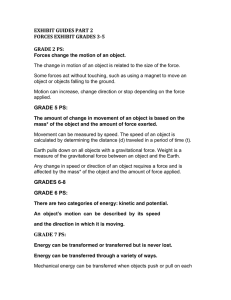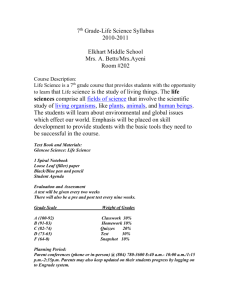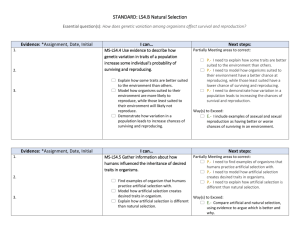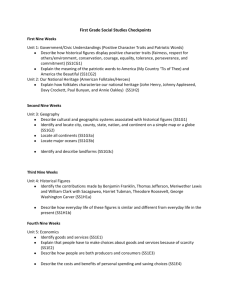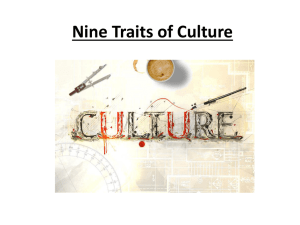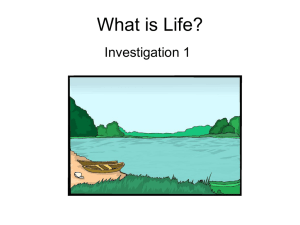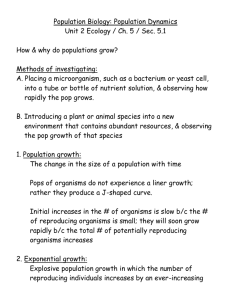Science 3rd Grade Pacing Chart
advertisement
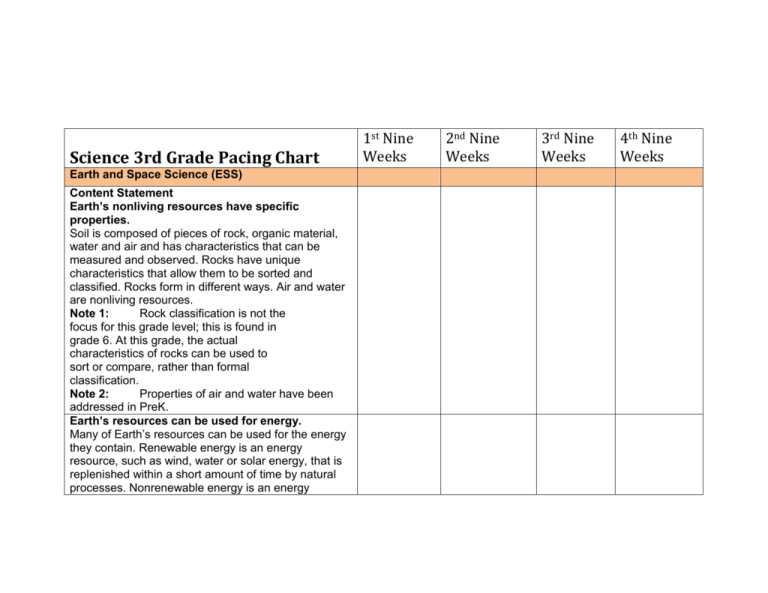
Science 3rd Grade Pacing Chart Earth and Space Science (ESS) Content Statement Earth’s nonliving resources have specific properties. Soil is composed of pieces of rock, organic material, water and air and has characteristics that can be measured and observed. Rocks have unique characteristics that allow them to be sorted and classified. Rocks form in different ways. Air and water are nonliving resources. Note 1: Rock classification is not the focus for this grade level; this is found in grade 6. At this grade, the actual characteristics of rocks can be used to sort or compare, rather than formal classification. Note 2: Properties of air and water have been addressed in PreK. Earth’s resources can be used for energy. Many of Earth’s resources can be used for the energy they contain. Renewable energy is an energy resource, such as wind, water or solar energy, that is replenished within a short amount of time by natural processes. Nonrenewable energy is an energy 1st Nine Weeks 2nd Nine Weeks 3rd Nine Weeks 4th Nine Weeks resource, such as coal or oil, that is a finite energy source that cannot be replenished in a short amount of time. Some of Earth’s resources are limited. Some of Earth’s resources become limited due to overuse and/or contamination. Reducing resource use, decreasing waste and/or pollution, recycling and reusing can help conserve these resources. Life Science (LS) Offspring resemble their parents and each other. Individual organisms inherit many traits from their parents indicating a reliable way to transfer information from one generation to the next. Some behavioral traits are learned through interactions with the environment and are not inherited. Individuals of the same kind differ in their traits and sometimes the differences give individuals an advantage in surviving and reproducing. Plants and animals have physical features that are associated with the environments where they live. Plants and animals have certain physical or behavioral characteristics that improve their chances of surviving in particular environments. Individuals of the same kind have different characteristics that they have inherited. Sometimes these different characteristics give individuals an advantage in surviving and reproducing. Note: The focus is on the individual, not the population. Adaption is not the focus at this grade level. Plants and animals have life cycles that are part of their adaptations for survival in their natural environments. Over the whole earth, organisms are growing, reproducing, dying and decaying. The details of the life cycle are different for different organisms, which affects their ability to survive and reproduce in their natural environments. Note: The names of the stages within the life cycles are not the focus. Note: New organisms are produced by the old ones. Physical Science (PS) All objects and substances in the natural world are composed of matter. Matter takes up space and has mass*. *While mass is the scientifically correct term to use in this context, the NAEP 2009 Science Framework (page 27) recommends using the more familiar term "weight" in the elementary grades with the distinction between mass and weight being introduced at the middle school level. In Ohio, students will not be assessed on the differences between mass and weight until Grade 6. Matter exists in different states, each of which has different properties. The most common states of matter are solids, liquids and gases. Shape and compressibility are properties that can distinguish between the states of matter. One way to change matter from one state to another is by heating or cooling. Heat, electrical energy, light, sound and magnetic energy are forms of energy. There are many different forms of energy. Energy is the ability to cause motion or create change. Note: The different forms of energy that are outlined at this grade level should be limited to familiar forms of energy that a student is able to observe.
